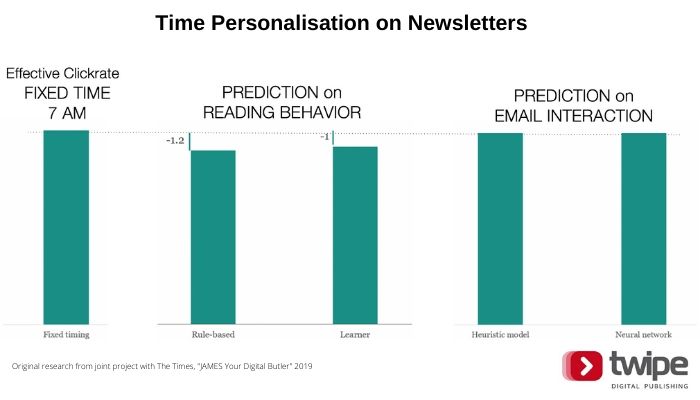Blog
5 guiding principles for your newsletter strategy
Many publishers are further turning to email in today’s coronavirus context world. With a feared economic contraction and decrease in new subscribers in the future, publishers are using email to retain existing subscribers and convert new subscribers. With that in mind, we have five guiding principles as you innovate on your newsletter strategy.
#1 Just get started
Previous experimentation with newsletters has made it clear to publishers that email is a crucial channel for converting and retaining paid subscribers. The Economist found that a potential subscriber who receives their weekly newsletters is 1.4x more likely to subscribe, while for retention efforts, an existing subscriber who receives a newsletter is less likely to churn. Similarly, French financial newspaper Les Echos found that readers who reached the website via email are more loyal than those who come via social media or search.
That’s one reason why Jacob Cohen Donnelly argues:
While there are multiple ways to do newsletters, I have one very firm belief … : The wrong newsletter strategy is not having a newsletter.
Jacob Cohen Donnelly, author of Media Operator
#2 Form and keep habits
Long-time readers of our blog will already know the importance of habits. For a reader habit to develop, consistency is crucial. Send time is a clear factor of consistency publishers can control. That means once you establish a schedule with your newsletter subscribers, it is key to stick to it.
There have been many initiatives to discover the ‘best time’ for a newsletter to be sent. In fact, in our one year of email personalisation experimentation with The Times, one aspect of personalisation we focused on was time. The data science teams ran several time personalisation models, including for the predicted time the subscriber would open their inbox.

Ultimately though the best performance came from the baseline fixed time model of 7 am. While this might be slightly disappointing for data scientists out there, it’s good news for publishers! It highlights the importance of a routine in sending time, allowing for better habit creation which is the essential part of creating a recurring reading behaviour. In short, the real best time to send a newsletter is when your readers expect it.
#3 Treat email as a separate platform
This week Annemarie Dooling of The Wall Street Journal published a thought-provoking piece on the importance of treating email as the separate platform it is.
It’s easy for those of us working in media and product to fall into the trap of thinking of email solely as the text within newsletters.
Annemarie Dooling, Membership Engagement Product Lead, The Wall Street Journal
She explains that’s why the team has shifted their thinking to treat the inbox as a platform, just as they do for Apple News or Facebook.
The Economist has changed their thinking the same way, with newsletter editor Sunnie Huang explaining that each newsletter has to fit into the other pieces of their product portfolio.
#4 Personalise, but realise people still want news
At the start of the year, more than half of the media executives surveyed by Reuters reported personalisation initiatives would be very important for them in 2020. However, sometimes when publishers speak about personalised newsletters, they really mean customised newsletters where they allow subscribers to opt-in to specific topics to follow.

Outside of the news industry, there’s been a lot of great work on personalisation, we can see the great recommendation engines both Netflix and Spotify have for example. However personalisation for news is still a tricky concept for some publishers, considering news is different every day and inherently different than music, movies, or a product from a catalogue. While it is possible to lean fully into personalisation, it is important to keep in mind that people still come to newspapers for news, so it is important to find the right balance between personally interesting stories and popular stories. That’s what we learned from our own experimentation, the hybrid model (mixing most popular stories with stories that are personally relevant) results in the highest engagement rates.
Ultimately the algorithms that power JAMES use a hybrid model for personalisation, learn more about “JAMES, Your Digital Butler“ in a free webinar on May 5, sign up here.
#5 Curate for finishability
Finally, make sure your newsletters are designed to provide the satisfying sense of finishability that today’s news consumers are looking for. Give your readers what they need to know or what interests them, but not too much more. While a weekly newsletter can be longer, a daily newsletter should be shorter so that subscribers can easily fit it into their daily routine. After all, who doesn’t love reaching inbox zero?
People really like newspapers because they have that finality. A good newsletter offers the same experience.
Elisabeth Goodridge, editorial director of newsletters at The New York Times
Newsletters helps readers to make sense of the full journalism offering of your news organisation; they help provide the service of curation that is so valuable.
Other Blog Posts

Stay on top of the game
Subscribe to Twipe’s weekly newsletter to receive industry insights, case studies, and event invitations.
"(Required)" indicates required fields

